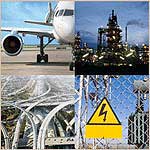Biblio
U.S. Senate. Committee on Environment and Public Works. Health Risks to Children and Communities From Recent EPA Proposals and Decisions on Air and Water Quality.
Submitted in Writing to Hearings before the Committee on Environment and Public Works,on February 6, 2007. Statement of Gina M. Solomon, M.D., M.P.H., Senior Scientist Natural Resources Defense Council, Associate Clinical Professor of Medicine University of California, San Francisco. 19 pages.
"Unfortunately, EPA is taking several major steps to eliminate information and decrease health protection from environmental hazards. Six recent draft or final EPA rules will each significantly limit critical information available to scientists, health care providers, communities, and ironically to EPA itself. As a result, children and communities will be left less protected and less able to protect themselves."
U. S. EPA Office of Atmospheric Programs. (2006). Click on Executive Summary (PDF) (26 pp, 310K).
Provides a broad overview of all U.S. greenhouse gas emission sources and sinks, introduces key concepts and discusses the primary drivers for changes in emissions, which has resulted in global warming.
See: Global Warming Frequently Asked Questions
Greenhouse gases Carbon Dioxide (CO2) and Methane (CH4) taken together account for 93% of all emissions, with 85% for (CO2) and 8% for (CH4). Enteric fermentation (flatulence and belching), taking place as a digestive by-product of cows and other ruminant animals accounts for less than half of the Methane emissions. Coal mining and natural gas systems, in addition to the (CO2) emissions of vehicles used to transport water add significantly to the total of all greenhouse gas emissions.
For pie charts graphically showing these percentages, see pages 20-22.
Weston Wilson. Letter written to Senators Allard and Campbell and Representative DeGette. Denver, Colorado. October 8th, 2004. The U.S. Environmental Protection Agency was criticized by Wilson and others for this Fracking Study which led to the "Halliburton Loophole" of 2005. See New York Times Editorial on Halliburton Loophole. See also the Energy Policy Act of 2005.

U.S. Environmental Protection Agency (EPA MOA). 2003. A Memorandum of Agreement Between The United States Environmental Protection Agency and BJ Services Company, Halliburton Energy Services, Inc., and Schlumberger Technology Corporation: Elimination of Diesel Fuel in Hydraulic Fracturing Fluids Injected into Underground Sources of Drinking Water During Hydraulic Fracturing of Coalbed Methane Wells, Dec. 12, 2003.
"While the Companies do not necessarily agree that hydraulic fracturing fluids using diesel fuel endanger USDWs when they are injected into CBM production wells, the Companies are prepared to enter into this agreement in response to EPA’s concerns and to reduce potential risks to the environment." See Drilling Around the Law for a follow-up on this voluntary agreement. According to the Environmental Working Group's report, "This promise, however, applied to only coalbed methane wells -- a small portion of natural gas and oil wells drilled – and only to those drilled directly into underground sources of drinking water."
- « first
- ‹ previous
- 1
- 2
- 3









